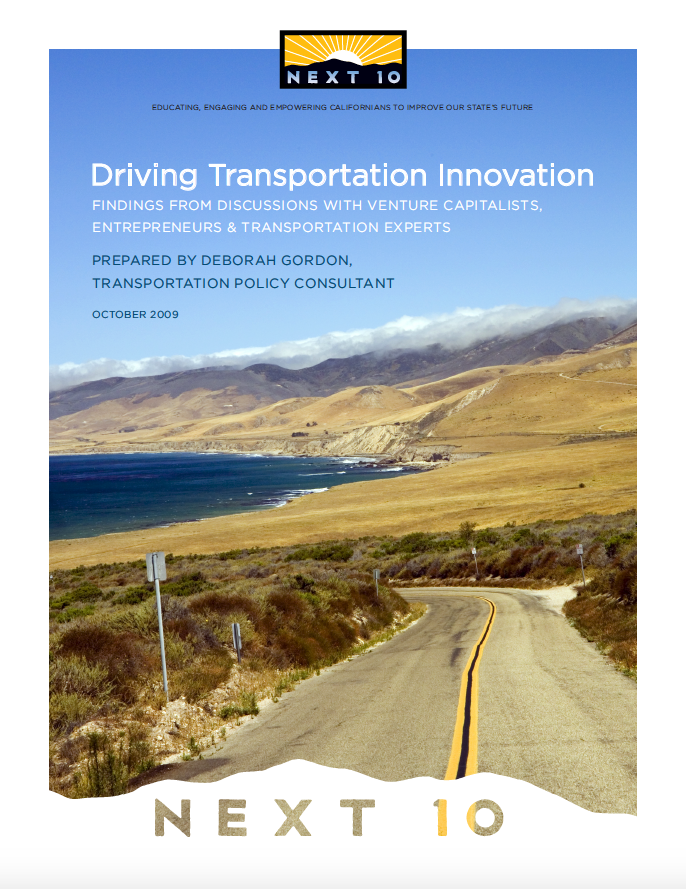Publications
Driving Transportation Innovation
Next 10 and partners convened venture capitalists, entrepreneurs and industry leaders to discuss policy options for driving near-zero emission transportation innovation. The report, Driving Transportation Innovation, presents an overview of the discussion and concludes that strategic sustained policymaking is required to trigger the technology and market transformations necessary to achieve near-zero emission transportation.
Continuing business as usual, the number of motor vehicles on the road will double from 1.5 billion today to three billion by 2030, doubling emissions, and dramatically increasing worldwide dependence on OPEC and a small number of government-controlled oil reserves. Experts gathered agree that key hurdles must be overcome in order to harness this market and drive the kind of technological progress necessary to move away from fossil fuel-based transportation.
Transportation innovations that deliver near-zero emissions have a central role to play in mitigating climate change and bolstering energy security. With its nearly exclusive dependence on oil and internal-combustion engines, transforming transportation will be a heavy lift. Barriers standing in the way of industry, entrepreneurs, investors, and consumers make it difficult for the market alone to deliver sweeping greentech innovations. The cost of transformational change will, no doubt, be high. But the overall benefits could be even greater.
This summary report was prepared by Deborah Gordon with input from an array of experts. While this is not a consensus document, there is general agreement among experts that a multi-faceted solutions toolbox—a mix of rules, incentives, RD&D, and other complementary policies will be needed to fully commercialize near-zero emission transportation innovations.
Critical barriers identified by the group include:
- A century of U.S. policies that in concert have effectively wed Americans (and growing ranks of other countries) to internal combustion engine (ICE) vehicles fueled almost entirely by fossil fuels. Among them, incentives and subsidies that have kept oil and gas prices low.
- Lack of market certainty created by artificially low gas prices
- Vehicle cost and resulting consumer demand
- Lack of sustained political leadership
The "multi-faceted policy toolbox" outlined in the report includes:
- Clear predictable long-term performance standards including low-carbon fuel, greenhouse gas emissions, and fuel cycle ZEV mandates that consider fuel cycle emissions allowances, miles driven, recyclability, and other elements.
- Balanced economic policies including Near Zero Emission Technology (NZET) production incentives, clean car discounts, and fuel price floor.
- R&D, government procurement, and technology transfer, including electricity infrastructure and technology development projects, and government procurement of near zero emission vehicles.
- Information, education, and outreach including hand-held, real-time, information devices to inform driver choices.
- Legal systems, including electric utility reforms, to facilitate NZET and low-carbon land use planning and zoning.
